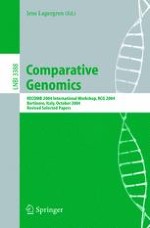2005 | Buch
Comparative Genomics
RECOMB 2004 International Workshop, RCG 2004, Bertinoro, Italy, October 16-19, 2004, Revised Selected Papers
herausgegeben von: Jens Lagergren
Verlag: Springer Berlin Heidelberg
Buchreihe : Lecture Notes in Computer Science
